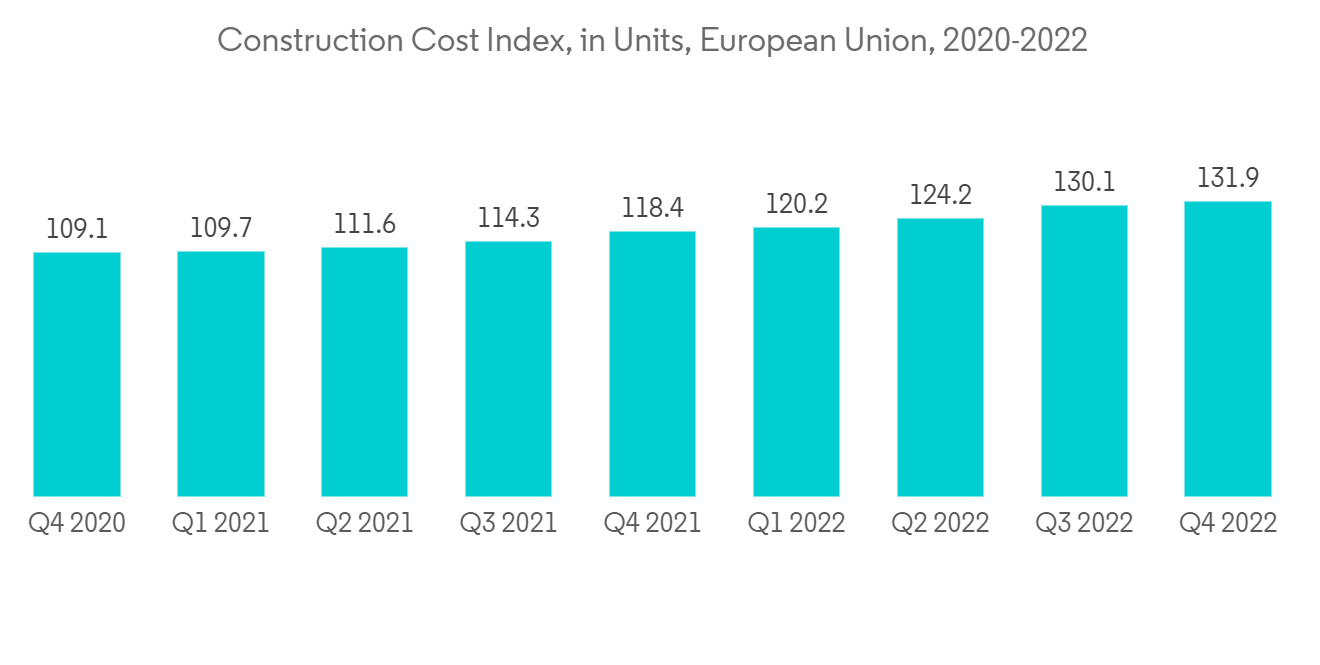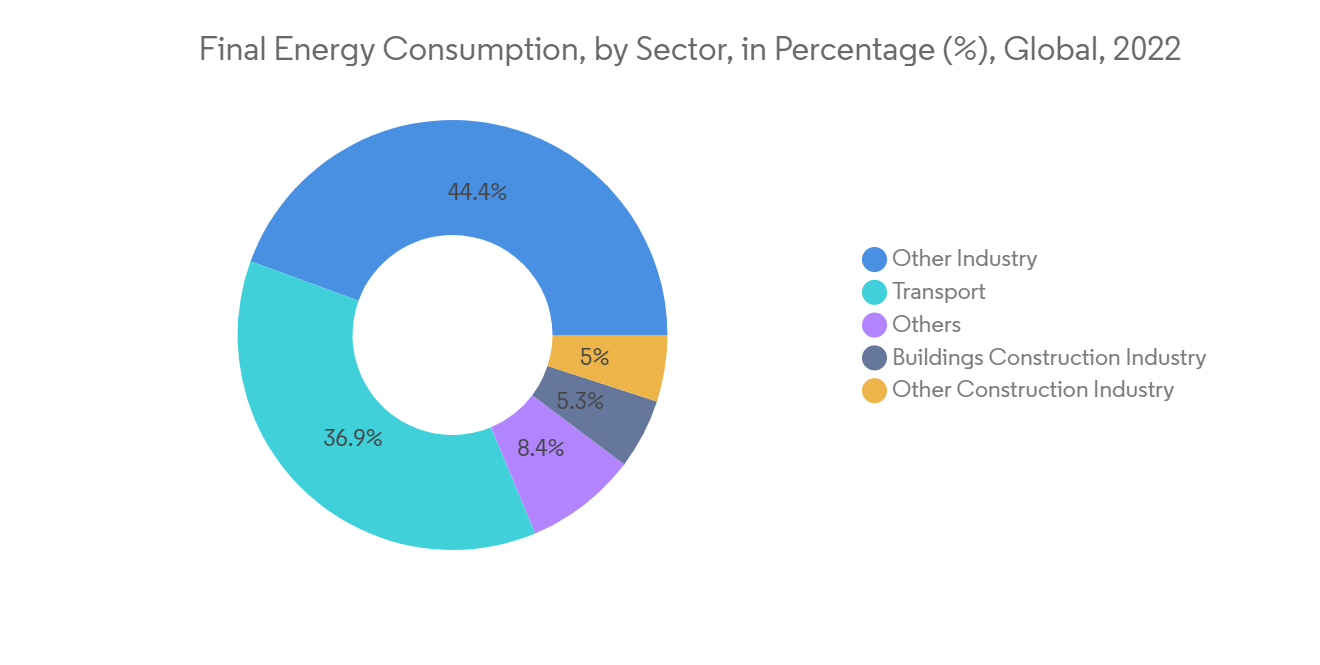 |
市場調査レポート
商品コード
1248846
製造住宅市場- 成長、動向、予測(2023-2028年)Manufactured Homes Market - Growth, Trends, and Forecasts (2023-2028) |
||||||
● お客様のご希望に応じて、既存データの加工や未掲載情報(例:国別セグメント)の追加などの対応が可能です。 詳細はお問い合わせください。
| 製造住宅市場- 成長、動向、予測(2023-2028年) |
|
出版日: 2023年03月25日
発行: Mordor Intelligence
ページ情報: 英文 150 Pages
納期: 2~3営業日
|
- 全表示
- 概要
- 目次
製造住宅市場は、予測期間中に5%を超えるCAGRで推移すると予測されています。
COVID-19の大流行に関連したサプライチェーンの問題により、手頃な価格で住宅を購入することが困難になりました。そのため、持ち家という夢を実現するために、より多くの人々が製造住宅に目を向けるようになりました。木材価格の高騰やコンクリート不足により住宅コストが上昇する中、多くの住宅所有者が製造住宅を支持し、市場の成長につながっています。
主なハイライト
- 製造住宅の建設コストは一般的に低く、これが近年の人気の高まりに寄与していると思われます。また、製造住宅コミュニティーの家賃も低いです。あるレポートによると、1ベッドルームのアパートの家賃相場は月1,600米ドルです。これに対し、モバイルホームパークの敷地は、平均家賃が月300米ドル近くであり、モバイルホームでの生活は、一般の人々にとって、他にはない手頃な住宅選択肢となります。
- 経済が好調な場合、住宅価格の上昇により、低賃金労働者が住宅を購入することはさらに難しくなります。経済が低迷すれば、失業や賃下げによって、より多くの人が手頃な価格の住宅を手に入れる必要があります。このように、モバイルホームパークは、景気の好不調にかかわらず、うまくいくことができます。そのため、あらゆる経済状況下で市場の成長を保証することができます。
- 一戸建てや集合住宅とは異なり、モバイルホームは固定式建築の数分の一の時間で製造することができるため、需要に合わせた対応が可能です。住宅在庫の少なさは圧倒的な需要に支えられている面もありますが、熟練工の不足やサプライチェーンの寸断によって建築プロジェクトが完成しないことも影響します。世界中で、建設業界はこのような問題に直面しています。しかし、モバイルホームの製造は、より速く、より効率的なプロセスによって、これらの問題を回避することができ、市場の成長をより確実なものにすることができます。
- 最近の調査によると、90%の人がモバイルホームやメーカー製住宅に満足していることが明らかになりました。71%の居住者が、製造住宅を購入する主な要因として、手頃な価格を挙げています。また、製造・移動販売住宅の居住者の約62%は、あと10年は自宅に住むことを想定しており、38%は自宅の売却を想定していないとのことです。世界の製造住宅市場をリードしているのは、北米です。
- 米国には、推定430万戸の製造住宅用地があります。新しい製造住宅の約31%がコミュニティ内に置かれています。製造住宅業界の動向と統計によると、米国では2,200万人が製造住宅または移動式住宅に住んでいます。製造住宅は、年間新規住宅着工数の9%を占め、新規製造住宅の約76%は個人資産として名義変更されています。
製造住宅の市場動向
建設費の高騰が市場成長を促進する
世界中の建設会社が、鉄鋼や木材の価格上昇に伴うコスト上昇圧力に直面しています。材料、日用品、労務・監督、下請け、日和見コスト、全般的に各地でエスカレートしています。南北アメリカでは2022年の12カ月間で10~16%の値上げ傾向があっています。欧州では、2022年に10~25%(国によって異なる)の上昇が緩やかになったが、依然として高止まりしています。アジア太平洋(APAC)では、2022年に10~12%のインフレが発生。鉄鋼やその他の素材は依然として需要を満たす必要があり、かなりのバックログが発生しています。こうしたコスト上昇に伴い、新たに住宅を購入することは難しくなります。このような状況下で、住宅を探している人は、製造された住宅に目を向けるかもしれません。
製造住宅は大量生産され、組立ラインで建設されるためコストが低く、製造住宅は従来の住宅よりもはるかに手頃な価格で購入することができます。Manufactured Housing Instituteによると、製造住宅のコストは、1平方フィートあたりで見ると、従来の住宅の約半分です。製造住宅の総費用は、1平方フィートあたり100~200米ドル程度です。これに対し、従来の新築住宅は1平方フィートあたり平均150米ドル、地域によっては400米ドルにもなりやすいと言われています。さらに、モジュール式住宅は、製造された同程度の住宅よりも高価な場合があります。製造住宅は1平方フィートあたり約40~50米ドルであるのに対し、モジュール式住宅は1平方フィートあたり40~80米ドルです。2,000平方フィートのモジュラーホームの平均コストは、約240,000米ドルです。同等の製造住宅は、150,000-170,000米ドル以上です。従来の住宅ではなく、製造された住宅を購入することで、顧客は何十万米ドルも節約することができます。したがって、建設費の上昇に伴い、製造住宅市場の需要も増加する可能性があります。

エネルギーと環境の効率化が成長の原動力
新しい報告書によると、建物・建設部門の二酸化炭素排出量とエネルギー消費量は、2021年にCOVID-19パンデミック前のレベルにまで回復しています。2022 Global Status Report for Buildings and Construction」によると、2021年には約10ギガトンの二酸化炭素(CO2)が建設部門によって大気中に排出されました。これは、2020年のレベルから5%増加したことに相当し、2019年の最後のピークを2%上回りました。さらに、2021年は、政府間機関である国際エネルギー機関のデータによると、建築部門のエネルギー需要が135エクサジュールと、過去10年間で最も大きく増加したことも判明しています。建設部門が一時的に停止していた2020年には排出量の小康状態が記録されましたが、調査ではパンデミック前のレベルにまで回復していることが明らかにされています。エネルギーは、建物のエネルギー用途(暖房、冷房、調理、照明、設備など)に電気や気体・液体・固体燃料、地域エネルギーとして消費され、世界の業務関連CO2排出量(10 Gt CO2)の約27%を占めています。また、鉄鋼、アルミニウム、コンクリート、ガラス、レンガなど、建物の建設に使用される材料の生産は、CO2排出量と合わせると、世界のエネルギーおよびプロセス関連の排出量の約37%を占めています。このようなエネルギー消費と排出の増加に伴い、より良い代替品を探す必要があります。
製造住宅・インスティテュートによると、製造住宅を建設する企業は、従来型の住宅よりも廃棄物の発生を最大で90%削減しています。製造された住宅を現地で輸送し、組み立てることで、従来の住宅を建てるよりも環境破壊が大幅に少なくなります。住宅都市開発法によると、米国の製造住宅は高いエネルギー効率を備えていなければなりません。そのため、EPAの厳しいエネルギー性能基準をクリアしたことを意味するエナジースター認証を受けた製造住宅は一部に限られます。現在の製造住宅は、2016年に建てられた製造住宅よりも27%効率が良くなっており、大幅なエネルギー削減が可能です。
さらに、効率的な開発プロセスのため、製造住宅を建てる際の無駄が少なく、スクラップが再利用されることも多いです。製造住宅の建設に使用される材料は、より環境に配慮した構造または設計とともに、エネルギー効率に優れたものが選ばれます。その代表的な例が、熱損失と暖房燃料のエネルギー使用量を減らすための総合的な断熱材です。製造住宅の下側、壁、屋根に環境に優しい安全な断熱材を入れるだけで、住宅のエネルギー使用量は最大31%減少します。エネルギー使用量の削減と環境破壊の軽減のため、製造住宅は今後数年で普及が進むと思われます。

製造住宅の業界概要
製造住宅市場は、複数のプレイヤーの存在を考慮すると、その性質上、断片的であり、主要プレイヤーはほとんど市場シェアを占めていないです。Cavco Industries、Clayton Homes、Skyline Champion Corporation、Karmod Prefabricated Technologies、Adriaなどが市場の主要企業です。北米における製造住宅コミュニティの人気の高まりと、世界中でプレハブ建築の採用が進んでいることが、新規参入を容易にしています。しかし、こうした小規模なプレーヤーは、既存の大手プレーヤーとの激しい競合に直面しています。プレハブ建築に汚名が着せられている国々は、それぞれの市場で既存の小規模な需要に対して高い競合に直面しています。市場の大手企業は、他のプレイヤーに対して競争力を持つために、幅広い製品群を提供していることがほとんどです。新興企業は、革新的な製品や技術の統合によって市場に参入しようとしています。
その他の特典:
- エクセル形式の市場予測(ME)シート
- 3ヶ月のアナリストサポート
目次
第1章 イントロダクション
- 調査の前提条件と市場定義
- 調査対象範囲
第2章 調査手法
第3章 エグゼクティブサマリー
第4章 マーケット洞察
- 現在のマーケットシナリオ
- バリューチェーン/サプライチェーン分析
- 製造住宅市場における技術革新
- 業界における政府の規制と取り組み
- 製造住宅のコストに関する洞察
- COVID-19の市場への影響について
第5章 市場力学
- 促進要因
- 抑制要因
- 機会
- ポーターのファイブフォース分析
- 供給企業の交渉力
- 消費者/買い手の交渉力
- 新規参入業者の脅威
- 代替品の脅威
- 競争企業間の敵対関係の強さ
第6章 市場セグメンテーション
- タイプ別
- 一戸建て
- マルチファミリー
- 地域別
- 北米
- 米国
- カナダ
- メキシコ
- 欧州
- ドイツ
- 英国
- フランス
- イタリア
- スペイン
- その他欧州
- アジア太平洋地域
- インド
- 中国
- 日本
- その他アジア太平洋地域
- 世界のその他の地域
- ラテンアメリカ
- 中東・アフリカ地域
- 北米
第7章 競合情勢
- 市場集中の概要
- 企業プロファイル
- Champion Home Builders
- Clayton Homes
- Skyline Champion Corporation
- Karmod Prefabricated Technologies
- Adria
- Epack Prefab
- Cavco industries
- General Coach Canada
- Samlans Homes Canada
- Ironwood Manufactured Homes
- Cumberland Japan
- Knight Mobile Homes
- Huasha Home
- K Home*
第8章 市場機会と将来動向
第9章 付録
The manufactured homes market is estimated to register a CAGR of greater than 5% during the forecast period. Supply chain issues related to the COVID-19 pandemic made it difficult to buy a home at affordable prices. Thus, more people have started turning to manufactured homes to achieve the dream of homeownership. As housing costs increase due to lumber price spikes and concrete shortages, many homeowners favor manufactured homes, leading to market growth.
Key Highlights
- Construction costs for manufactured homes are typically lower, which may have contributed to their growing popularity in recent years. The rents in the manufactured home communities are also lower. According to a report, rent prices for a one-bedroom apartment are USD 1,600 per month. In contrast, mobile home park lot have an average rent of nearly USD 300 per month, and mobile home living becomes a uniquely affordable housing option for the general population.
- In a strong economy, housing price increases make it even harder for low-wage workers to afford a house. In a weak economy, job loss and wage reduction mean that more people need access to affordable housing. Thus, mobile home parks can do well regardless of economic turn. This ensures the growth of the market in all kinds of economic situations.
- Unlike single-family homes and apartment complexes, mobile homes can be manufactured in a fraction of the time of fixed construction, allowing them to keep pace with demand. While low home inventory is driven partly by overwhelming demand, it is also affected by a shortage of skilled workers and supply chain interruptions that keep building projects from being completed. Across the globe, the construction industry faces these issues. These can be circumvented through the faster, more efficient processes associated with mobile home manufacturing, thus making the market's growth more certain.
- A recent study reveals 90% of people are satisfied with their mobile or manufactured home. 71% of residents cite affordability as the key driver for manufactured housing. About 62% of manufactured and mobile home residents anticipate living in their homes for another 10 years, and 38% don't ever anticipate selling their homes. North America leads the global manufactured homes market, with the United States being the leading country in North America.
- There are an estimated 4.3 million manufactured home sites in the United States. Approximately 31% of new manufactured homes are placed in a community. Manufactured housing industry trends and statistics show 22 million people in the United States live in manufactured or mobile homes. Manufactured homes make up 9% of annual new home starts, and about 76% of new manufactured homes are titled as personal property.
Manufactured Homes Market Trends
Rising Construction Cost are Driving the Market Growth
Construction companies around the world have been facing increased cost pressures with rising steel and lumber prices. Materials, commodities, labor and supervision, subcontractors, and opportunistic cost, in general, are escalating in many places. There was a 10-16% price increase trend in the Americas over the 12 months of 2022. In Europe, increases of 10-25% (depending on the country) in 2022 have moderated but are still at elevated levels. The Asia-Pacific (APAC) experienced 10-12% inflation in 2022. Steel and other materials still need to meet demand, and a significant backlog is outstanding. With these cost increases, it becomes difficult for new homeowners to buy a home. Under such circumstances, people looking for a home may turn to manufactured homes.
Manufactured homes cost less because they are mass-produced and built on assembly lines, and manufactured homes are much more affordable than traditional homes. According to the Manufactured Housing Institute, manufactured housing costs about half of what a traditional house costs on a per-square-foot basis. The total cost of manufactured homes is around USD 100-200 per square foot; in contrast, a traditional new-build home averages USD 150 per square foot and can easily go as high as USD 400, depending on the locality. Furthermore, a modular home may be more expensive than a comparable manufactured one. Manufactured homes cost around USD 40 to 50 per square foot compared to USD 40 to 80 per square foot for modular homes. The average cost of a 2,000-square-foot modular home runs about USD 240,000. A comparable manufactured home runs more than USD 150,000-170,000. Customers can save hundreds of thousands of dollars by buying a manufactured home instead of a traditional one. Consequently, with the rising construction costs, the demand in the manufactured homes market may also rise.

Energy and Environmenal Efficiency are Strong Growth Drivers
According to a new report, carbon emissions and energy consumption in the buildings and construction sector rebounded to pre-COVID-19 pandemic levels in 2021. Around 10 gigatonnes of carbon dioxide (CO2) were emitted into the atmosphere in 2021 by the construction sector, according to the 2022 Global Status Report for Buildings and Construction. This is equivalent to a 5% increase from 2020 levels, exceeding the last peak in 2019 by 2%. Additionally, 2021 also saw the most significant increase in energy demand in the buildings sector in the last ten years at 135 exajoules, as per the intergovernmental organization International Energy Agency data. A lull in emissions was recorded in 2020 when the construction sector had temporarily come to a halt, but the study reveals a rebound back to pre-pandemic levels. Energy is consumed in the form of electricity and gaseous, liquid, and solid fuels and district energy for building energy uses (e.g., heating, cooling, cooking, lighting, and equipment) and is responsible for around 27% of global operational-related CO2 emissions (10 Gt CO2). The production of materials used in the construction of buildings, including steel, aluminum, concrete, glass, and brick, when combined with CO2 emissions, account for around 37% of global energy and process-related emissions. With this increased energy consumption and emissions, there is a need to look for better alternatives.
According to the Manufactured Home Institute, companies that build manufactured homes generate up to 90% less waste than traditionally built homes. Transporting and assembling a manufactured home on-site causes significantly less environmental damage than building a traditional home. According to the Housing and Urban Development Code, manufactured homes in the United States must have high energy efficiency. Therefore, only some manufactured homes are Energy Star certified, meaning they have met the EPA's strict energy performance standards. Manufactured homes today are 27% more efficient than manufactured houses built in 2016, and that means significant energy savings.
Additionally, there is less wastage when building a manufactured home because of the effective development process, and the scraps are often reused. The materials used to build manufactured homes are selected for their energy efficiency along with a more environmentally friendly construction or design. A prime example is comprehensive insulation to reduce heat loss and heating fuel energy usage. By adding environmentally friendly/safe insulation to a manufactured home's underside, walls, and roof alone, homes' energy use decreases up to 31%. Due to less energy usage and reduced environmental damage, manufactured homes may see increased adoption in the coming years.

Manufactured Homes Industry Overview
The manufactured homes market is fragmented in nature, considering the presence of several players, with the major players holding little market share. Cavco Industries, Clayton Homes, Skyline Champion Corporation, Karmod Prefabricated Technologies, and Adria are some of the major players in the market. The increasing popularity of manufactured home communities in North America and the increasing adoption of prefabricated construction across the globe make it easier for new players to enter the market. Still, these small players face fierce competition from established major players. Countries, where prefabricated construction has a certain stigma attached to it face high competition for the existing small demand in the respective market. The major players in the market mostly offer a wide range of products to have a competitive edge over other players. Start-ups try to break into the market with innovative products and technology integration.
Additional Benefits:
- The market estimate (ME) sheet in Excel format
- 3 months of analyst support
TABLE OF CONTENTS
1 INTRODUCTION
- 1.1 Study Assumptions and Market Definition
- 1.2 Scope of the Study
2 RESEARCH METHODOLOGY
3 EXECUTIVE SUMMARY
4 MARKET INSIGHTS
- 4.1 Current Market Scenario
- 4.2 Value Chain / Supply Chain Analysis
- 4.3 Technological Innovations in the Manufactured Homes Market
- 4.4 Government Regulations and Initiatives in the Industry
- 4.5 Insights into Manufactured House Costs
- 4.6 Impact of COVID-19 on the Market
5 MARKET DYNAMICS
- 5.1 Drivers
- 5.2 Restraints
- 5.3 Opportunities
- 5.4 Porter's Five Forces Analysis
- 5.4.1 Bargaining Power of Suppliers
- 5.4.2 Bargaining Power of Consumers / Buyers
- 5.4.3 Threat of New Entrants
- 5.4.4 Threat of Substitute Products
- 5.4.5 Intensity of Competitive Rivalry
6 MARKET SEGMENTATION
- 6.1 By Type
- 6.1.1 Single Family
- 6.1.2 Multi Family
- 6.2 By Geography
- 6.2.1 North America
- 6.2.1.1 US
- 6.2.1.2 Canada
- 6.2.1.3 Mexico
- 6.2.2 Europe
- 6.2.2.1 Germany
- 6.2.2.2 UK
- 6.2.2.3 France
- 6.2.2.4 Italy
- 6.2.2.5 Spain
- 6.2.2.6 Rest of the Europe
- 6.2.3 Asia-Pacific
- 6.2.3.1 India
- 6.2.3.2 China
- 6.2.3.3 Japan
- 6.2.3.4 Rest of the Asia-Pacific
- 6.2.4 Rest of the World
- 6.2.4.1 Latin America
- 6.2.4.2 Middle East and Africa
- 6.2.1 North America
7 COMPETITIVE LANDSCAPE
- 7.1 Market Concentration Overview
- 7.2 Company Profiles
- 7.2.1 Champion Home Builders
- 7.2.2 Clayton Homes
- 7.2.3 Skyline Champion Corporation
- 7.2.4 Karmod Prefabricated Technologies
- 7.2.5 Adria
- 7.2.6 Epack Prefab
- 7.2.7 Cavco industries
- 7.2.8 General Coach Canada
- 7.2.9 Samlans Homes Canada
- 7.2.10 Ironwood Manufactured Homes
- 7.2.11 Cumberland Japan
- 7.2.12 Knight Mobile Homes
- 7.2.13 Huasha Home
- 7.2.14 K Home*
